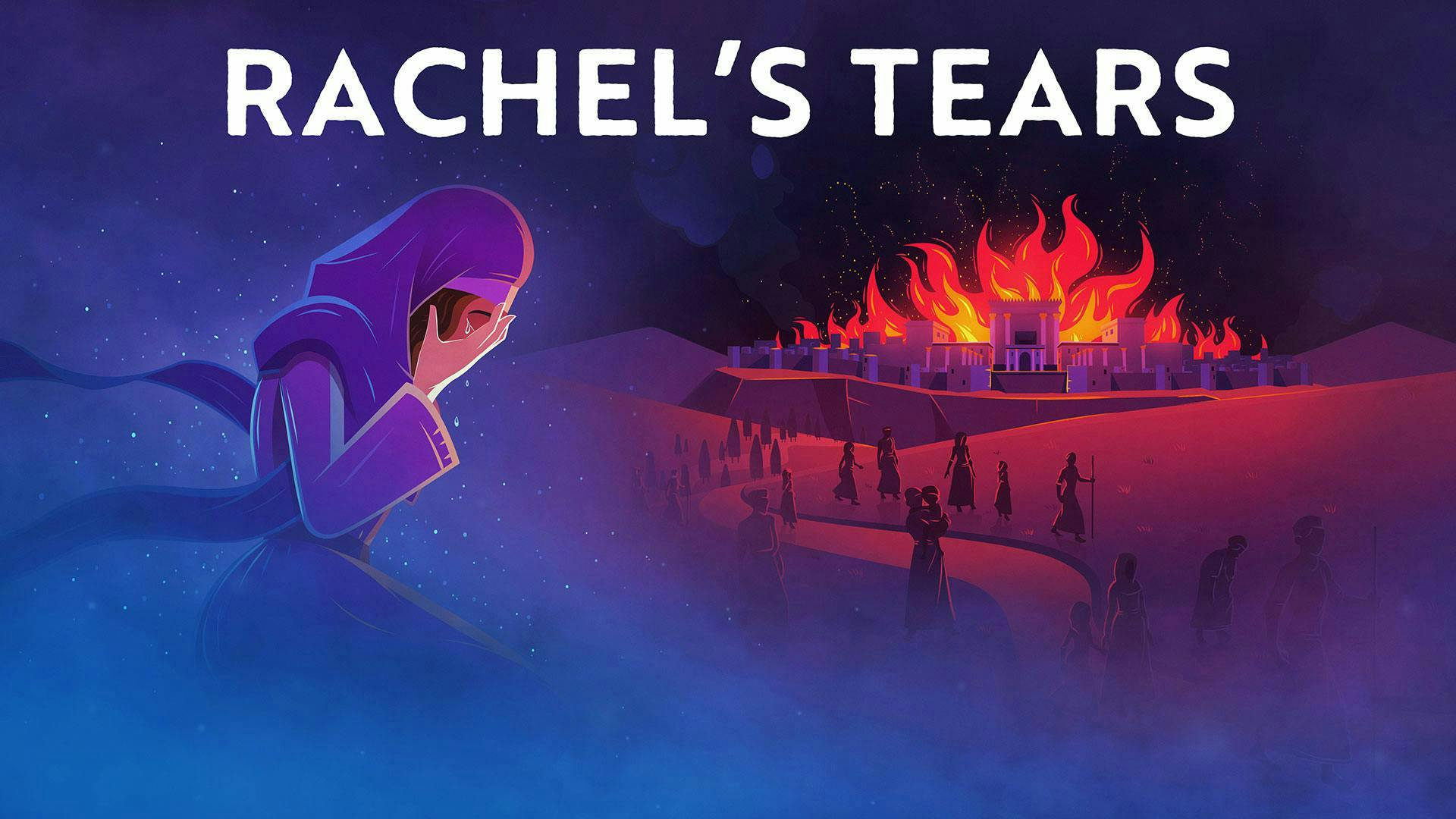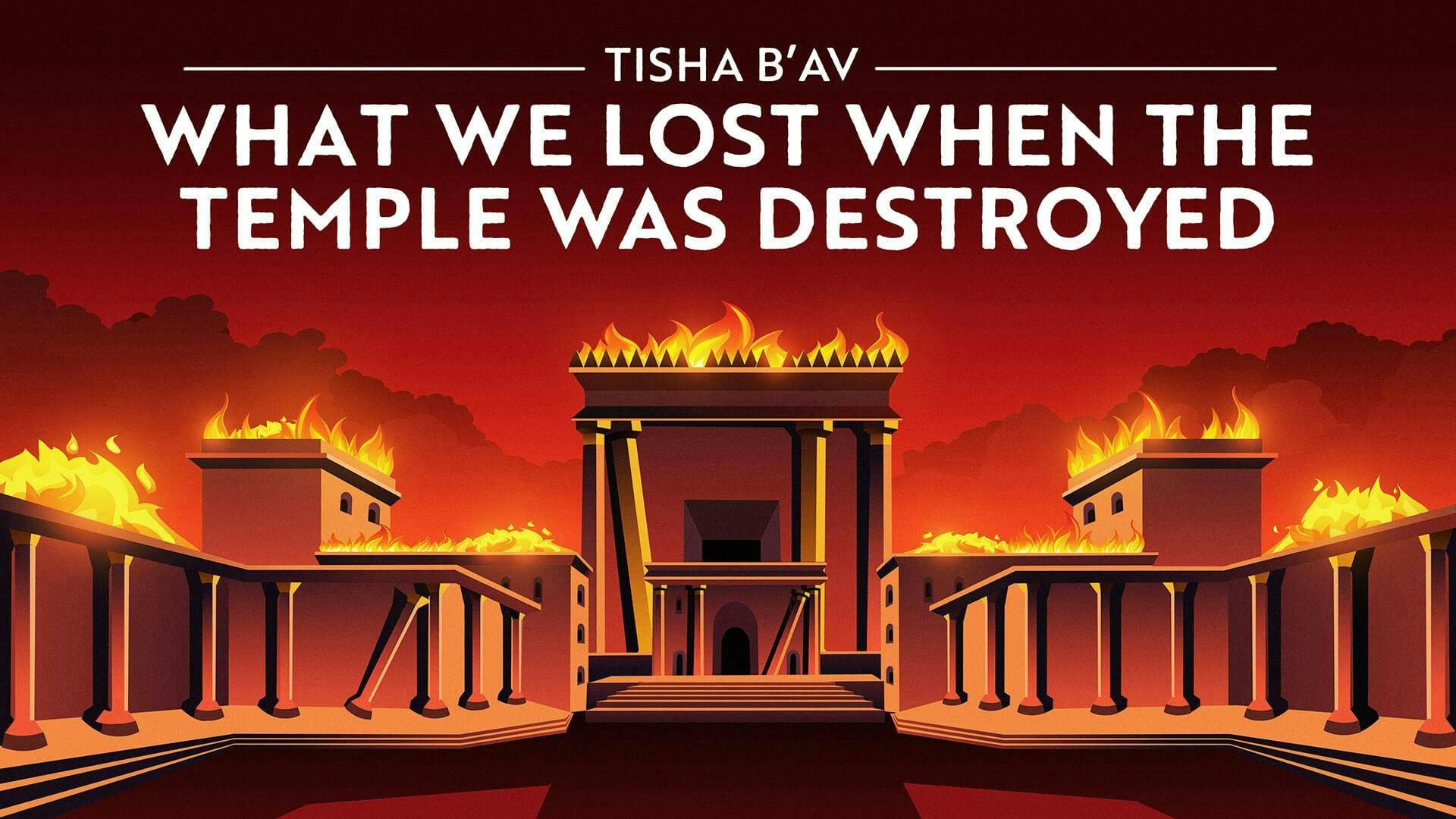TISHA B'AV 2025: VIDEOS, PROGRAMS & LEARNING
Why does God let us suffer?
This fresh approach to an age-old question will deepen your Tisha B’Av experience, and may just hold the key to accepting loss as part and parcel of living a full and good life.
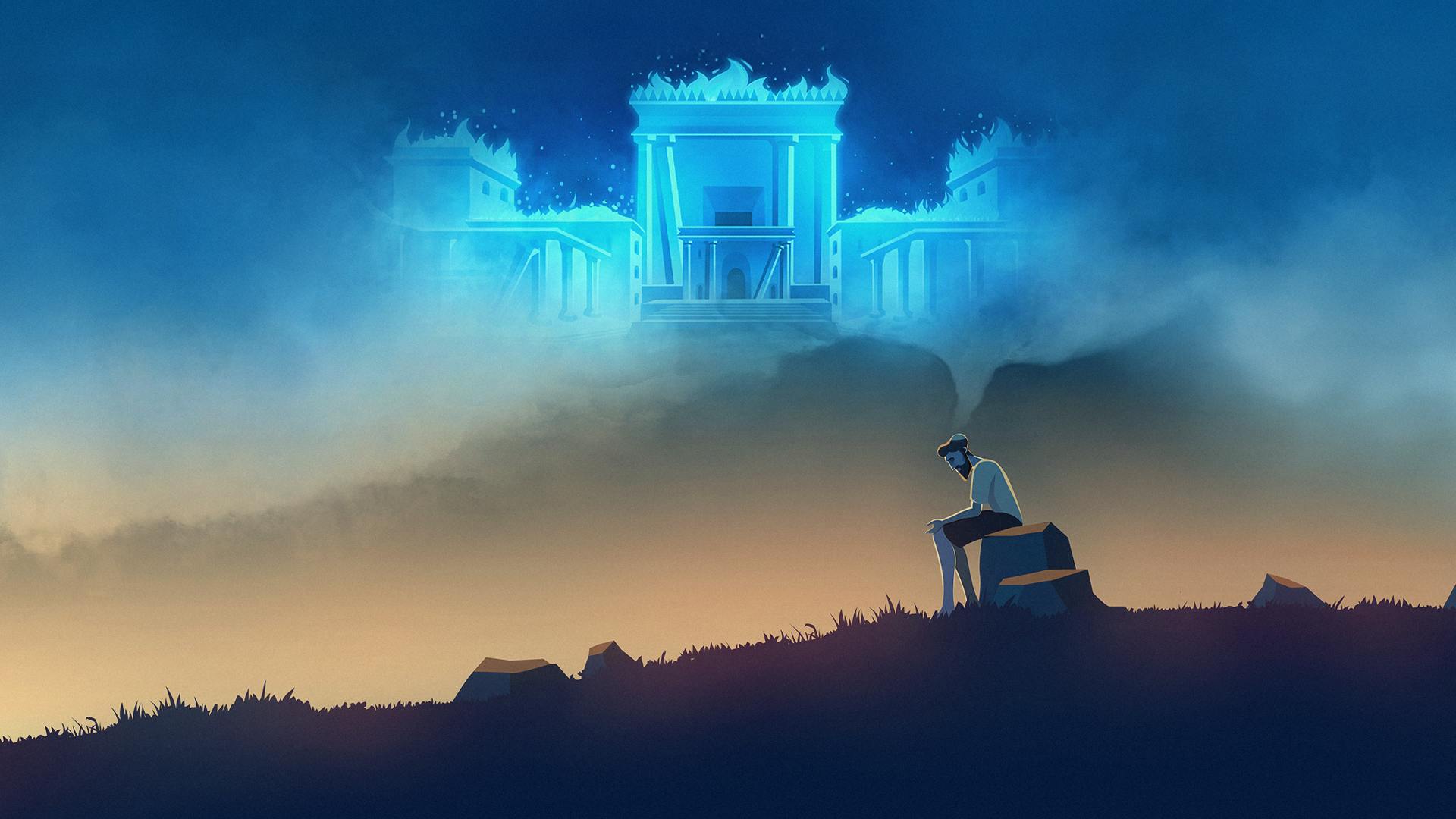

What to Watch on Tisha B’Av
Upcoming dates: August 2 to August 3, 2025

How Israel Split And The Road To Tisha B’Av
Video series • Part 1 of 8 • 7 min
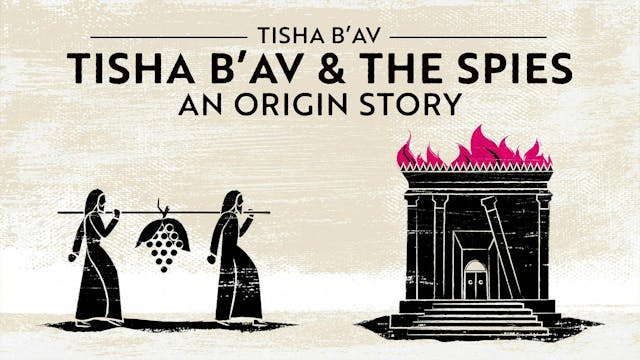
How The Sin Of The Spies Led To Tisha B’Av
Video series • Part 1 of 6 • 10 min
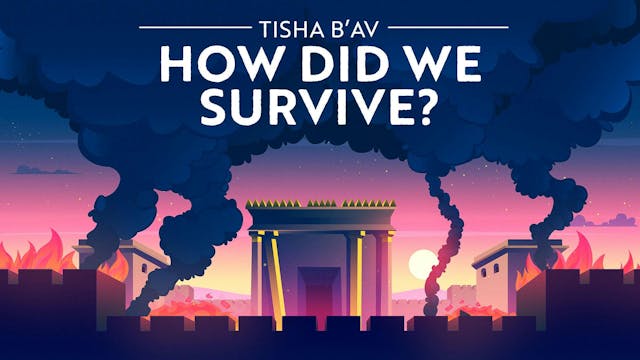
Epic Tales of Tisha B’Av: Yavneh
Video series • Part 1 of 5 • 10 min
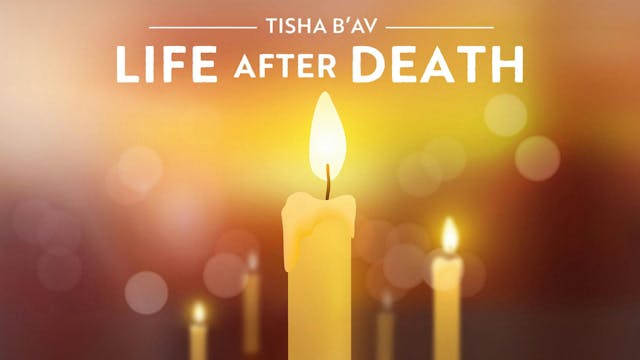
Mourning: What Death Teaches Us About What It Means to Live
Video • 1 hour, 53 min
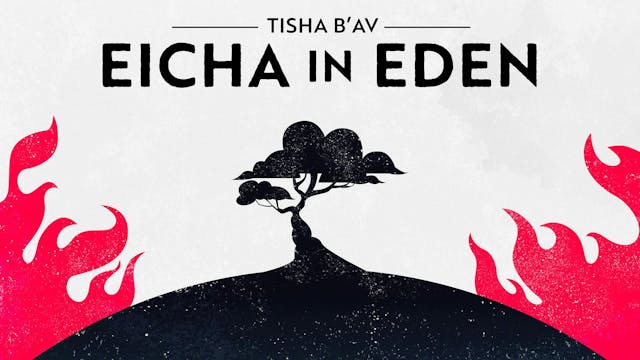
Megillat Eicha And Its Secrets
Video series • Part 1 of 2 • 57 min

Tisha B'Av after the Iran War
Video series • Part 1 of 7 • 12 min

Tisha B'Av After October 7th
Video series • Part 1 of 5 • 14 min
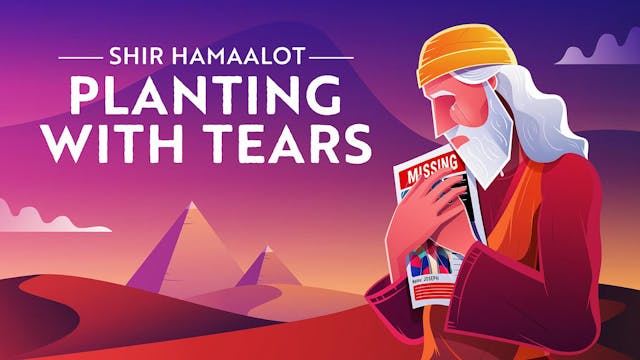
Shir Hamaalot: Planting with Tears
Video series • Part 1 of 6 • 10 min
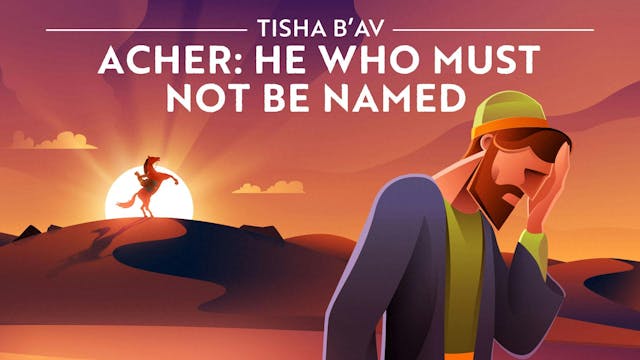
Acher: He Who Must Not Be Named
Video series • Part 1 of 5 • 25 min
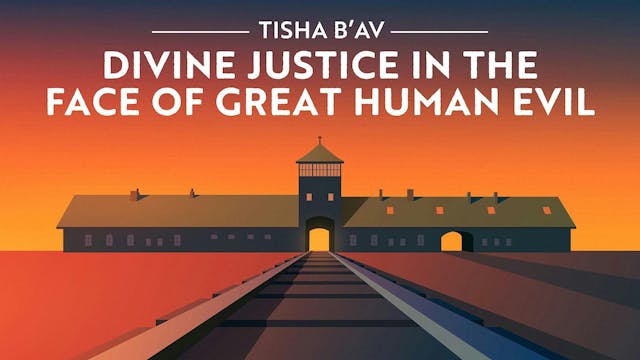
Of Soldiers And Slaves: Divine Justice In The Face Of Great Human Evil
Video • 2 hours, 58 min

Kinot Live With Rabbi Fohrman
Video series • Part 1 of 4 • 3 hours, 42 min
More Tisha B’Av Learning, Articles, and Guides
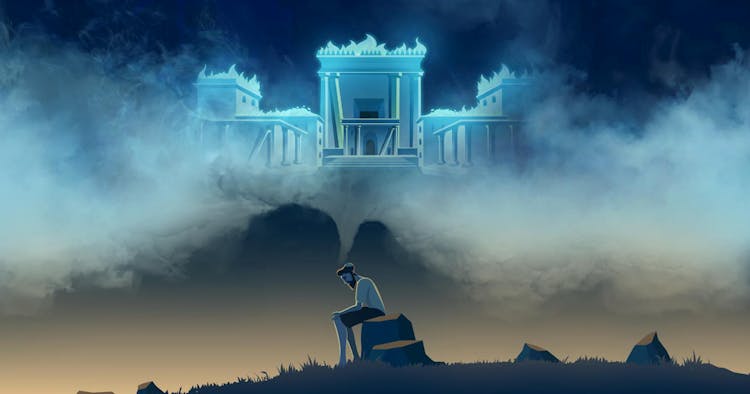
What Is Tisha B’Av? Explanations To Help You Connect
101 Guide
What is Tisha B'Av all about? Find everything you need to make it a meaningful day: a 101 explainer, review of laws and customs, inspiring videos, and more.

The Book of Lamentations (Megillat Eicha)
101 Guide
The Book of Lamentations, written by Jeremiah the prophet, includes scenes that are vividly graphic, and themes that are distressingly clear. But in contrast to the direct - yet tragic - message, the writing is incredibly complex and confusing. What are we to make of this book traditionally read on Tisha B’Av?
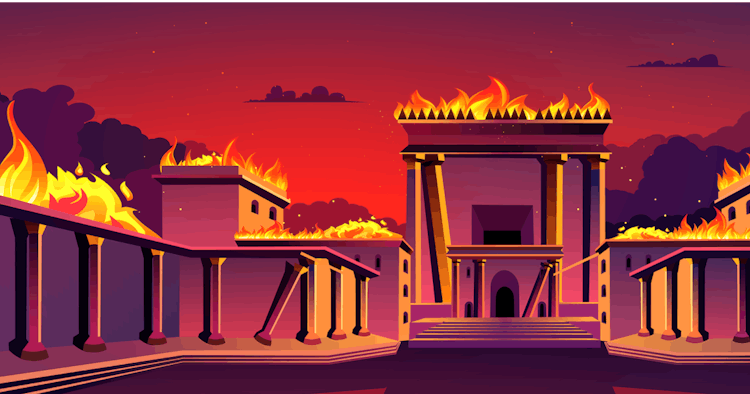
Tisha B’Av Torah & Haftarah Readings
101 Guide
. To set the tone of loss and lamentation for Tisha B'Av morning, we read Deuteronomy Chapter 4:25-40 as the Torah reading and Jeremiah Chapter 8:13-23 as the accompanying haftarah. Why are these the readings for this day and what can they add to our Tisha B’Av today? Keep reading to go deeper.
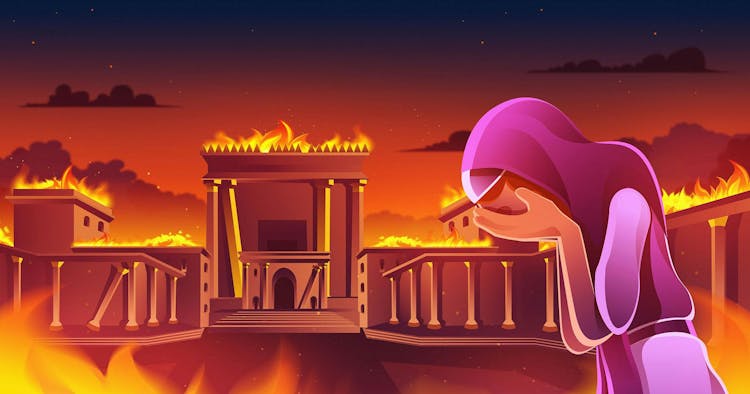
Kinot | Tisha B'Av 2025: What are Kinot? Explanations and Meaning
101 Guide
It's one thing to read kinot on Tisha B'Av. It's another thing to connect to kinot. Aleph Beta is here to help. Rabbi David Fohrman's approach to kinot will help you connect to their power and meaning.

Book of Iyov
101 Guide
. The book of Job is one of the most complex and bewildering books of Tanach. Why do we read this book on Tisha B’Av and what lessons can we learn from Job’s struggles with God?
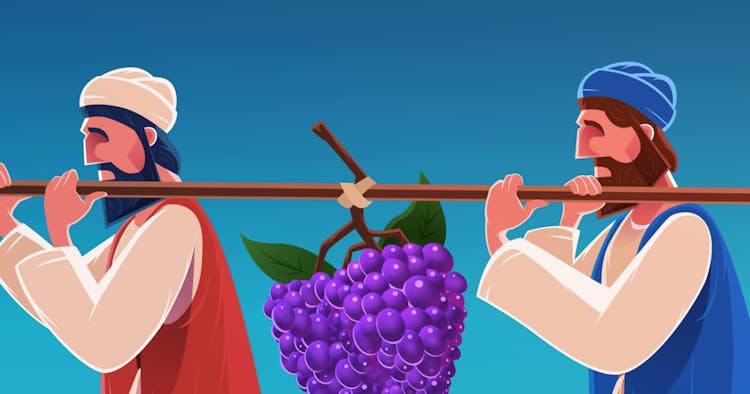
Tisha B'Av & the Spies
101 Guide
. On Tisha B’Av we mourn the destruction of the First and Second Temples. But the Talmudic Sages trace our mourning even further back in history, to another catastrophe that they say happened on the 9th of Av: the sin of the spies. What in the world does the sin of the spies have to do with the destruction of the Temples, and how can understanding this connection help us unlock the transformative power of Tisha B’Av?

Is Tisha B'Av a Yom Tov?
101 Guide
. Tisha B’Av is the most solemn day on the Jewish calendar. We spend it fasting and mourning. But the Book of Lamentations (Eicha) refers to Tisha B’av as a moed – a holiday! With its lack of festive meals, Tisha B’Av certainly doesn’t feel like a holiday. How exactly do we categorize Tisha B’Av? Is Tisha B’Av a Yom Tov? And what can this classification teach us about the meaning of the day?

Tisha B'Av for Kids
101 Guide
Tisha B’Av is hard enough – but when you’re fasting yourself AND trying to make this day meaningful for your kids, it’s even harder. That’s why we put together this page with plenty of resources to make Tisha B’Av meaningful for kids of all ages. Including a BRAND NEW Teacher/Parent Guide for you to use along with our “Sinat Chinam: Baseless Hatred” series, so you can discuss the concepts of Tisha B’Av together with your kids at their level.
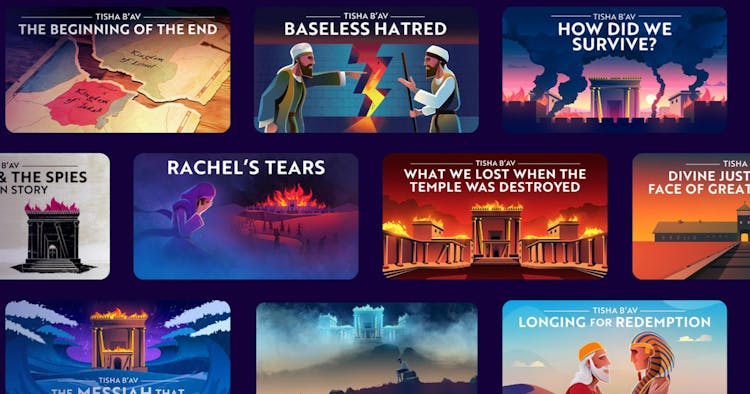
Top 5 Tisha B’Av Videos
101 Guide
. Not sure what to do this Tisha B’Av? We've got you covered with videos for whatever mood your in. Here is you curated guide to a meaningful Tisha B’Av.
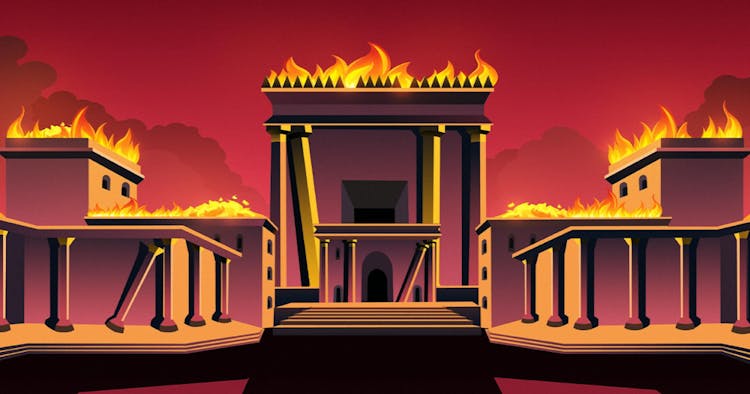
Mourning the Beit HaMikdash
101 Guide
. How can we connect to the loss of the Temple today, thousands of years after its destruction? Explore the deeper meaning behind the Beit HaMikdash, and learn how our tragic loss continues to affect our world today.
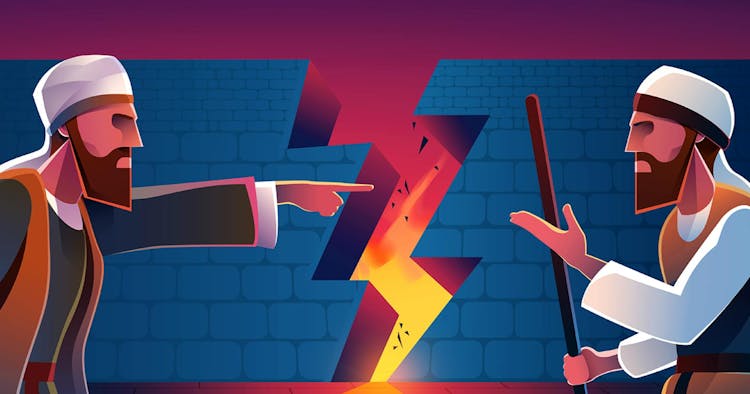
Tisha B’Av: What Is Baseless Hatred?
101 Guide
. This Tisha B'Av resource guide accompanies the video series "Tisha B'Av: Baseless Hatred." Designed for educators and parents, it provides summaries of key concepts and events from each video, along with discussion questions to deepen understanding.

Why Do We Mourn On Tisha B'Av?
101 Guide
. The Jewish holiday Tisha B'Av commemorates the destruction of two Temples with fasting and mourning practices. What purpose do this day’s observances serve, and how can we connect with that purpose today, millenia after the events it commemorates? What does it mean for God, and what does it mean for us?

Tisha B'Av and the Messiah: Uncovering Hidden Potential
101 Guide
. Tisha B'Av is the darkest day in the Jewish calendar, when the Jewish people mourn the destruction of the Temples. But this day nearly heralded the long-awaited arrival of the Messiah and the ultimate redemption. Explore the fascinating story behind the moment that could have transformed the course of history.

Gemara for Tisha B’Av—Explanation and Inspiration
101 Guide
. On Tisha B'Av, many study Gemara about the Churban (destruction of the Temple). Discover the meanings behind these Gemara stories and their lessons on loss and mourning. Engage deeply with these texts and explore additional resources for a meaningful Tisha B'Av.
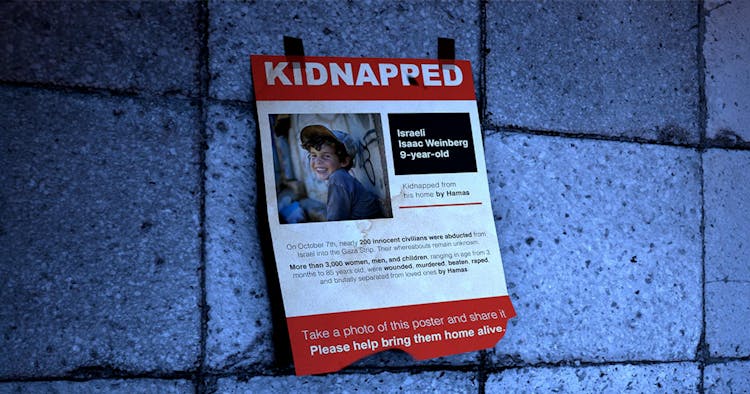
Tisha B’Av After October 7th: Reflecting on New Tragedies
101 Guide
. How do the tragic events of October 7th transform our understanding of Tisha B'Av? Explore Rabbi Fohrman's insights on mourning, faith, and the power of listening to the past in Aleph Beta's new “Tisha B’Av After October 7th” video course. Discover a deeper connection to God and Jewish history through the recitation of Kinot and reading about Rachel's timeless tears.
Finding Meaning in Tisha B’Av
101 Guide
. On Tisha B'Av we mourn for the loss of the Temple. But we mourn for a lot more than that as well. Over time, we have come to mourn all national tragedies on this single day. What meaning can we find in Tisha B'Av's far reaching scope?
Tisha B'Av: Day of Mourning or Day of Reflection?
101 Guide
Tisha B'Av can be confusing. On the one hand, it's a day of mourning. We're calling out to God and hoping to be heard. On the other hand, there’s a more moralistic side to Tisha B’Av. We talk about sinat chinam and avodah zorah, and the role we played in bringing about the destruction of the Temples. But to genuinely mourn and to sincerely reflect on our mistakes at the same time seems like a lot to ask.
Our Tisha B’Av Live Program 2025
Every year, Aleph Beta hosts a live webcast on the day of Tisha B'Av to help us connect in a deeper way to our grief and mourning. It is just one of the many perks available to premium members; click to see our subscription plans and learn how you can help support our mission. See an example of one of Rabbi Fohrman's previous Tisha B'Av webinars:The Secret Of Divine Mourning – The Real Reason The Tree Of Knowledge Was In The Garden.
Don’t Spend Tisha B’Av Alone. Join hundreds of Jews from around the world for live Torah study with Rabbi Fohrman and bring community and connection to your fast.
Tisha B'Av Afternoon, August 3rd, 3-5 PM ET
Why Do We Fast On Tisha B'Av?
Tisha B'Av is the saddest day on the Jewish calendar. It commemorates many tragedies that have occurred throughout Jewish history — most significantly, the destruction of the First Temple in 586 BCE by the Babylonians and the destruction of the Second Temple by the Romans in 70 CE.
Due to its designation as a day of deep mourning, all enjoyable activity is forbidden on Tisha B'Av. Besides general mourning restrictions, additional prohibitions are observed on Tisha B'Av. These include refraining from eating, drinking, bathing, applying perfumes, intimacy, wearing leather, greetings, and other pleasurable activities, such as sitting on comfortable chairs.
According to the Mishnah (Ta'anit 4:6), we fast on the 9th of Av because of the following events that took place on that day:
- Before the Israelites entered the land of Israel, they sent spies to scout out the land. The spies returned with a negative report, full of false warnings about the danger that waited in the land of Israel. On the ninth of Av, after hearing and believing these reports, the Israelites cried, demonstrating a lack of faith in God. This generation was therefore punished and not allowed to enter the land.
- The First Temple was destroyed by the Babylonians, led by Nebuchadnezzar. According to the Talmud, the Temple began to burn on the ninth of Av and continued to do so through the tenth. Several mourning practices, including refraining from listening to music, are observed through midday on the tenth of Av for this reason.
- The Second Temple, built by Ezra and Nehemiah, was destroyed by the Romans. This resulted in the scattering of Judea and began the Jewish exile from the Holy Land.
- The Romans suppressed the Bar Kokhba revolt and killed over 500,000 Jews, destroying the city of Betar, on July 8th, 135 CE, or the 9th of Av, 3892.
- Turnus Rufus, the Roman commander who crushed the Bar Kokhba revolt, further demolished the site of the Temple and its surrounding area (135 CE).
The service of Tisha B’Av includes the reading of Eicha, or The Scroll of Lamentations, which mourns the destruction of Jerusalem. This is followed by the recitation of kinot, liturgical elegies that lament the loss of the Temple in Jerusalem. Tisha B’Av has become a day of mourning not only for the tragedies associated with the month of Av, but for all tragedies that have occurred to the Jewish people. Therefore, some kinot recall the murder of the Ten Martyrs, pogroms in medieval Jewish communities during the Crusades, and the genocide of European Jews during the Holocaust. We go into a deeper explanation in our Kinot Guide for Tisha B'Av.
In addition to the five calamities that are described in the Mishnah, throughout Jewish history many tragic events have been associated with 9 Av, including:
- The expulsion of the Jews from England in 1290.
- The expulsion of the Jews from Spain in 1492.
- The outbreak of World War I in 1914, which overturned many Jewish communities and laid the groundwork for World War II and the Holocaust.
- Heinrich Himmler received approval for The Final Solution on the ninth of Av in 1941. As a result, the Holocaust began, killing a third of the world's Jewish population.
- The mass deportation of Jews from the Warsaw Ghetto to Treblinka in 1942.
On Tisha B'Av it is also forbidden to study Torah since this is considered an enjoyable activity. However, mournful texts—such as the Book of Lamentations, portions of Jeremiah and chapters of the Talmud that discuss the laws of mourning—can be read.
Although Tisha B'Av is a day of extreme sadness, some find it hard to truly mourn something they've never really had. It can be difficult to find a connection to tragedies in history that seem far removed. Still others find it hard to know how to channel their grief into something constructive. Is there a path to effective grieving? The videos above guide you to find answers to these and other questions about Tisha B’Av.
Tisha B'Av Shiurim
You want to make Tisha B’Av more meaningful. We get it. And we have good news! We’re lucky to live in an age in which there are so many Tisha B’Av shiurim, Tisha B’Av videos, and other resources available online. But… how do you choose? What separates one from the next?
About Aleph Beta’s Tisha B’Av Shiurim
Let us tell you a little bit about what makes our Tisha B’Av shiurim special. Here at Aleph Beta, our lead scholar Rabbi David Fohrman and his team of scholars strive to combine a rigorous, close reading of the biblical text with an exploration of the text’s implications for spiritual practice and personal growth. Then we take those ideas and turn them into animated videos that bring the Torah to life. The result is Torah learning which is both intellectually compelling and emotionally engaging.
It all stems from a unique methodology that we apply to the study of Torah. We believe that the Torah is a book unlike any other book, a book through which God communicates crucial lessons to us about how to live our lives… and that in order for us to hear those messages, we have to read the text with great care, intelligence, and attention to detail, noticing when the text includes a phrase that strikes us as repetitive, or when it seems to be echoing earlier stories or passages. We have to read the text with “fresh eyes,” and ask the questions that the text is begging us to ask. And this is precisely what we try to do in our Tisha B’Av shiurim.
Let us give you a taste of what we mean:
Think of the first word in Eicha (Lamentations), the scroll that we read on the evening of Tisha B’Av. In Hebrew, the word is אֵיכָה. Forget about the vowels and just focus on the letters: איכה. Do those letters look familiar to you? Do they come up anywhere else in the Torah? The answer is, of course, that they do. They come up in the story of Adam and Eve’s sin in the Garden of Eden. Just after Adam and Eve ate from the forbidden tree, God said to Adam: אַיֶּכָּה? “Where are you?”
If all we had was this one parallel, then we wouldn’t have much to go on. But there’s more here that connects the two stories… so much more. So what are we to make of it?
The Torah seems to be suggesting to us that the exile from Jerusalem is somehow connected to the exile from the Garden of Eden, but what does that mean? And how can we connect to that idea to make our Tisha B’Av experience deeper and more meaningful? To see it, check out our Tisha B’Av video: “Eicha And Ayekah: Was There A Tisha B’Av In Eden?”
Our Tisha B’Av Shiurim: Chazal and Meforshim
You see, in the Jewish tradition, reading the Torah has always been a practice of standing on the shoulders of giants. We study the comments of the ancient Sages of the Midrash and the Rishonim (medieval commentators), following their sainted lead in understanding what this sacred text is trying to communicate to us. But sometimes, when we begin our study that way, we risk losing sight of the forest for the trees. We lose our ability to step back and ask the basic questions that the text is begging us to ask, or to notice those conspicuous aspects of a text’s language – a doubled word here, an intriguing pattern there – that invite us to dig deeper and discover an untold story. What would we see if we allow ourselves to notice these things?
This methodology – what you might just call “basic reading comprehension” – sometimes does reveal “new” layers of meaning in this most ancient of texts — but just as, if not more often, it illuminates how our predecessors — those great authors of the Midrash, Rashi, Sforno, Ramban, and others — arrived at their conclusions, helping us to see what it was that they saw. You’ll find that Aleph Beta’s Tisha B’Av shiurim engage seriously with Chazal and with the meforshim, treating them with great reverence and revealing in their words new dimensions of understanding.
Many of our Tisha B’Av shiurim do this, but for a particularly captivating example, see “The Power Of Rachel’s Tears.” In that video, Rabbi Fohrman considers a Midrash from Eicha Rabbah that discusses a story from the Book of Genesis: the story of Rachel giving simanim (“signs”) to her sister Leah on her wedding night. He brings persuasive evidence to show that there is an incredible hidden layer of meaning contained within the Sages’ words, and will leave you with a profound reverence for the subtle brilliance of our Sages in mining the Torah’s intricate wisdom. He will also leave you feeling inspired and ready to harness the power of Tisha B’Av.
Tisha B'Av For Kids
It’s not easy to figure out how to make Tisha B’Av a meaningful day for your kids – because Tisha B’Av isn’t like other Jewish festivals. We have no trouble figuring out what to do for our kids on Passover – with its intricate seder, emphasis on asking questions, and a table full of delicious and eye-raising foods, it’s a great kids’ holiday. Purim is another great kids’ holiday. Who doesn’t enjoy a good costume parade? The same can be said for most of the other festivals, too… but Tisha B’Av?
It's the most mournful day of the year, a day on which we physically afflict ourselves – and emotionally, we try to tap into feelings of grief and loss. We read from Eicha (Lamentations) about the graphic violence that plagued our people in the wake of the Temple’s destruction, and recite kinot (poems) that describe Jewish suffering in even more disturbing detail. These are mature themes that can’t easily be translated for children, nor do we necessarily want to do so.
So sometimes, it feels like all we can do is just try to "get through" the physical strictures of the day while still taking care of our kids’ basic needs. But what if we want to actually provide a real Tisha B’Av “experience” for our kids? Not: “Hmmm, let’s go to the Science Center today, because I'm fasting and it’ll be easier for me if we stay indoors.” But to figure out a way to take some aspect of the day and translate it into something that is meaningful for our children, something that can figure in their learning journey. It would have to be age-appropriate, no doubt, but… what might that look like? How could we do that?
Welcoming Teaching Moments
For starters, allow us to offer a more holistic suggestion — not so much an activity for kids as a way that you might help to make Tisha B’Av real for them. Be overt with your kids about your own experience of the day. Allow them to see that you behave on Tisha B’Av differently than you do on any other day. This may well spur them to ask questions, and then you’ve got yourself a motivated learner.
This, after all, is precisely what we do on Passover. We engage in dozens of rituals — dipping vegetables in water, removing the seder plate from the table, then returning it — all so that “the children will ask questions.”
You might think about Tisha B’Av in the same way. Are you abstaining from eating meat during the Nine Days (or the week) leading up to Tisha B’Av? Sometimes our instinct is to draw up a menu full of delicious meat-free alternatives and hope that no one notices that the meat is missing. But what if you explain to your kids what changes you are making to the family menu and why? If you are sitting on a low stool or the floor on Tisha B’Av day, and your child notices, embrace the opportunity to answer their question.
You don’t have to insulate your kids from Tisha B’Av just because they themselves are too young to mourn. In fact, if you try, you may be missing valuable opportunities to teach them about why you find it meaningful.
Watch This Tisha B'Av Video with Your Kids
When it comes to your kids and Tisha B’Av, you can welcome teaching moments as they arise organically, and you can also create them. We do have some Aleph Beta videos to recommend to you — videos that you can watch along with your older children on Tisha B’Av day, or that you can use as the basis for a discussion or an activity for younger children.
If you have a high-schooler, or even a mature middle-schooler, consider sitting down with them to watch one of our videos, “Sinat Chinam: The Great Tisha B'Av Crime."
In this video, Rabbi Fohrman explores an idea from the Talmud that the Temple was destroyed because of sinat chinam, baseless hatred – and that on Tisha B’Av, we are meant to think about how we can banish baseless hatred from our hearts. But he starts by asking a provocative question:
Honestly, how often are you tempted to hate somebody baselessly? When is the last time you were walking down the street and you said: “Oh, there's Phil, I hate him. No reason; it’s baseless.” Are you like that? Is there anyone you know like that? That’s not a normal human thing to do. So are we creating some kind of scarecrow with “baseless hatred” that just doesn't exist and then we congratulate ourselves that we don't have this terrible sin? “Wow! Great, you’re not a psychopath – you should be proud of that?”
Rabbi Fohrman goes back into the text to re-examine the original Talmudic story (the story of Kamtza and Bar Kamtza). He argues that if we read that story with clear eyes, we will arrive at a surprising understanding of the nature of sinat chinam. In the end, he suggests that we’re misunderstanding sinat chinam – it’s not really hatred for no reason; it’s not something that only psychopaths feel. Rather, the kind of baseless hatred that the Talmud warns us about is uncomfortably close to home. Rabbi Fohrman tries to teach us how to identify this baseless hatred in ourselves and how to attempt to rise above it.
He explains it all in a way that is age-appropriate for middle- and high-school students. Watch it together with your kids on Tisha B’Av day — it may even spark a memorable family discussion about how we experience anger and how we might temper it.
If your kids enjoyed that video, then we also recommend “The Power Of Rachel’s Tears” and “Yavneh: The Secret Of Jewish Survival” for mature high-schoolers.
Tisha B'Av Activity for Young Children
Even if your children are too young to appreciate the “Sinat Chinam” video itself (although if your kids are like the kids of some Aleph Beta staff members, they will jump at the opportunity to watch an animated anything, and you never know what might sink in), you can still have a conversation with them about the material.
After all, many children as young as four or five years are old enough to understand the idea of hatred – even if they really don’t comprehend the intensity of it, they can relate to the notion that people sometimes have very strong negative feelings about other people, that we can get angry, that we can hold grudges, and that we can lash out, treating others in a way that’s not becoming our best selves.
Have you ever said to your child, “I’m sorry that I got upset with you earlier today. I didn’t like it when you weren’t listening to me, but I shouldn’t have yelled at you like that”? If so, you know that it is possible to raise these mature ideas of anger and teshuvah (repentance, or self-growth) in a way that even young children can understand.
To get that conversation started, here’s what you can do. Start by watching our Tisha B’Av video, “Sinat Chinam: The Great Tisha B'Av Crime.” Then you can ask your child if he/she would like to hear a Tisha B’Av story – and you can tell the story of Kamtza and bar Kamtza that Rabbi Fohrman tells in the video. You might pause along the way to ask your child some of the following questions:
- How would you feel if this happened to you? If you were invited to a party, and then you were asked to leave because the host didn’t want you there? undefined
- Have you ever felt out? Can you tell me about that experience? What was that like for you? undefined
- Have you ever seen anyone else feel left out? Can you tell me about it? How did you feel when you saw that? Do you think there’s anything you could have done, or could do in the future, to make them feel better?
- Do you ever feel angry at another person? How does it feel to be angry? Do you like the feeling or do you not like it? Is it pleasant, uncomfortable?
- When you are angry, how do you stop being angry? What do you do to calm yourself down?
If you have a hard time imagining having an organic conversation like this with your young child, feel free to turn it into a game. Copy each step below onto its own piece of paper. Tape the papers up around the room. Invite your child to come with you on a Tisha B’Av Journey, and explain that the goal is to move through the six “stations” together until they reach the end. After they complete each station, give them a sticker to put on the piece of paper.
Start here for your Tisha B’Av Journey!
1 Hear a story! Grab two stuffed animals or hand puppets and re-enact the story of Kamtza and bar Kamtza for your child (watch our video for a great recap).
2 Draw a picture! Ask your child to draw a picture of the Kamtza/bar Kamtza story.
3 Share a story! Ask your child to share a story of a time when he/she felt left out, or saw someone else feeling left out.
4 Act it out! Ask your child, “What does it look like to be angry at someone? Act it out! Use your voice, use your body!”
5 Think about it! Ask your child, “When we’re angry, what can we do to help ourselves feel better?”
6 Brainstorm! Ask your child, “What are two things we do to help other people who might feel left out?”
You’ve made it to the end!
Remember that one of the things that we confront on Tisha B’Av is the idea that God cares about how we treat other people, so much so that, according to the Talmudic story in Gittin 56a, God decreed that the Holy Temple would be destroyed and our people exiled from Jerusalem all because we were expressing feelings of anger and hatred against one another in inappropriate ways. So you can reinforce this idea, explaining that treating other people nicely isn’t just a matter of good manners; it’s a core tenet of our religion, of what God wants from us.
Tisha B'Av for Kids... Starts with You
The truth is that the best way to make Tisha B’Av meaningful for your children is for you to model for them that it’s meaningful for you. And the only way to do that is to give yourself the time to prepare and study. Because Tisha B’Av isn’t just hard for kids to get into. Tisha B’Av is hard for adults to get into.
It’s not easy for someone in the 21st century to feel genuine yearning for the return of the Temple, to muster a tear for tragedies that happened to our people so long ago. Our videos will help you to get into that state of mind to connect, truly, to the meaning of the day. Even if it’s Tisha B’Av day and you realize that you haven’t done a lick of spiritual preparation, it’s not too late. Watch just one of our Tisha B’av videos – and walk away filled with inspiration that you can share with everyone around you, your children included.
Here’s a list of our favorite Tisha B’Av videos from shortest to longest, so you can figure out how to carve out the time:
- Sinat Chinam: The Great Tisha B'Av Crime.....................................42 min
- Yavneh: The Secret Of Jewish Survival...........................................44 min
- Shir HaMa'alot: What Does It Mean To Plant With Tears?...............49 min
- Eicha and Ayekah: Was There A Tisha B'Av in Eden?....................57 min
- The Power Of Rachel’s Tears..........................................................1 hr 1 min
- The Triumph and Tragedy of King Chizkiah.....................................1 hr 32 min


